Heinrich Kaminski (1886–1946)
Die Messe deutsch. Oh wirre Welt!
Heinrich Kaminski
Die Messe deutsch
O wirre Welt
Carus 70.703/00
Heinrich Kaminski
ca. 1930
https://heinrich-kaminski.de/
The seizure of power by the National Socialists in 1933 and the increasing despair at their inhuman regime became the catalyst for Heinrich Kaminksi to compose a remarkable work: the Messe Deutsch (German Mass), his own free paraphrase of the Latin Mass text.
Heinrich Kaminski (1886–1946) lived through two world wars. During the First World War, he did not allow himself to be swayed by the initial war fever of his friend, the painter Franz Marc (1880-1916), who had willingly followed his early call-up to the front and ended up paying for this with his life two years later in the Battle of Verdun. On the contrary, Kaminski’s musical response to the outbreak of war in 1914 was the 69th Psalm – a cry for help set to music. The National Socialists’ seizure of power in 1933 and the composer’s increasing despair at their inhuman regime inspired another composition: the Messe deutsch (German Mass), his own free paraphrase of the Latin mass text. The work remained a fragment. The call for mercy in “Kyrie eleison” and “Christe eleison” still flowed from Kaminski’s pen, and he was also able to capture the praise of “Gloria in excelsis Deo” in sound. But in view of the political situation, words failed him when it came to “Peace on earth” – “et in terra pax.”
Towards the end of June / beginning of July 1934, the National Socialists murdered around 100 politically inconvenient individuals and opponents of the regime, including Hitler’s predecessor as Reich Chancellor, Kurt von Schleicher (1882–1934), in a large-scale conspiracy of murder. First and foremost, the blow was aimed at the Sturmabteilung SA and its leader Ernst Röhm (1887–1934); to justify the action, Röhm was accused of allegedly planning a putsch. Nazi propaganda portrayed the murders as a preventive act of preservation, but critical contemporaries like Kaminski observed with particular clarity the inhumanity and contempt for the law displayed by the ruling powers. One year earlier, on his 47th birthday, Kaminski had already called on all his friends present to join him in founding an “order” for love and against hatred and violence, for which he himself wrote a set of regulations in which the members pledged “to hate nothing and no one … because hatred is only overcome by the absence of hatred.”1 One of the members would appear to have contravened the decree of secrecy regarding the order and its regulations, which itself formed part of the regulations; as a consequence of this, Kaminski feared persecution by the regime even at this early stage and sought temporary refuge in Switzerland.
Kaminski’s financial plight in 1934 was also at least partly due to the political situation. Already in 1933, his position as professor of composition at the Prussian Academy of Arts had not been renewed, and in June 1934 he was finally constrained to resign from his post as music director in Bielefeld as a result of the increasing Gleichschaltung (political conformity) of cultural institutions. However, Kaminski remained personally unmolested until at least 1938, and his works continued to be performed. He certainly had Fritz Stein, a friend from his early years, to thank for this; Stein had managed to obtain a leading position at the Reichsmusikkammer (Reich Chamber of Music) and, for quite some time, was able to prevent events from taking a turn for the worse. Indeed, there were occasions when Kaminski was actually considered once more for a professorship in Berlin. But even Stein could not prevent the developments in 1938, when the Reichsstelle für Sippenforschung (Reich Office for Genealogical Research) determined that Kaminski’s father was of Jewish descent. As a result, his compositions were banned from performance until further clarification, and the composer fled to Switzerland again until May 1939. Although the classification was revised from “half-Jew” to “quarter-Jew” in 1940 and the performance ban was lifted in 1941, Kaminski’s works were still frequently avoided out of fear of offending those in power.
Open resistance to the regime was not advisable, and as others Heinrich Kaminski and his family apparently lived as inconspicuously as possible, as a note from the Bad Tölz district leadership dated 18 September 1940 testifies: “There are no complaints from a social point of view. Kaminski is an eccentric and lives a very secluded life. In the first few years after coming to power, he was opposed to National Socialism; in recent years, he seems to have converted and gives no cause for complaint in political terms.”2 However, Kaminski’s attitude towards the regime had not changed. In 1943, he is said to have offered shelter to a refugee from the “White Rose.”3
Even in 1943, Kaminski still felt unable to continue composing the Messe deutsch. During his exile in Switzerland in 1938, he had already devoted himself to the mass in an “attempt that once again proved futile.”4 Apparently, there had already been a number of attempts at making progress on the work. It was not until the beginning of 1944 that Kaminski succeeded in finding words, albeit not yet sounds, for “et in terra pax.” It was Kaminski’s most fervent wish to complete the mass: He wanted “to be able to bring these two works [Messe deutsch and Das Spiel vom König Aphelius] to completion; then, as far as a human being can say this, I will bid this world a heartened farewell when the hour comes.”5
But Kaminski did not live to complete the Messe deutsch. He died in 1946, soon after the end of the war, having lost three of his five children and his wife during the war years. His health had steadily deteriorated. However, as an artist, he always saw himself as a herald, and music as the servant of the annunciation: “This is, after all, the real and ultimate purpose of the work of art: to bring tidings of the light.”6 And thus, in his Messe deutsch, Kaminski also sought to herald the light to those who are lost: that despite all adversity they are “called to the LIGHT, born of LIGHT!” (movement I). A light of hope in dark times?
In 1944, Kaminski found the following words for “Et in terra pax”7:
Et in terra pax –
Alas, that we should wickedly disturb your peace again and again, Earth, while you, benevolent one, merely want to nourish us and, like a mother, bless us out of your abundance.
Oh this deluded generation!
How brazenly they defile you; how shamelessly the madmen with their presumptuous hands hack you to pieces with tanks, armored vehicles and cannons, sowing terrible bloodshed in their horrendous wars, blindly rending themselves apart – and then doltishly praying for peace from a God or some destiny, which they could only attain by repentance and inner readiness.
Oh, when will they finally mature, when will they decide on such a transformation?
Must they truly always be forced to do so by bitter penance?
Oh brothers, brothers, listen to the angels singing:
Pax hominibus bonae voluntatis.
[1] Quoted after Hans Hartog, Heinrich Kaminski. Leben und Werk, Tutzing 1987, p. 149.
[2] Quoted from Manfred Peters, Heinrich Kaminski. Auf den Spuren verloren gegangener Größe, 2005, remark 49: https://heinrich-kaminski.de/ ?ds=24# (accessed 17 June 2024).
[3] Hartog, p. 219.
[4] Quoted after Hartog, p. 194.
[5] Letter to Margrit Lutz from the beginning of 1944, quoted after Hartog, p. 226.
[6] Ingrid Samson, Das Vokalschaffen von Heinrich Kaminski mit Ausnahme der Opern, Diss. Frankfurt/Main 1955/56, p. 20.
[7] Musik & Kirche, vol. 17 (1947), p. 66.
Heinrich Kaminski
Easter 1929
https://heinrich-kaminski.de/

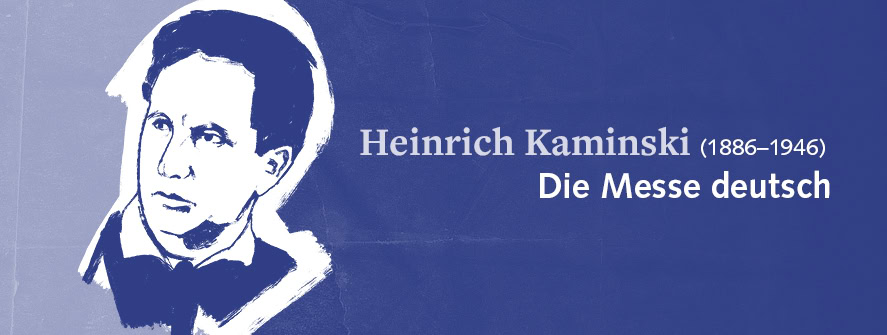
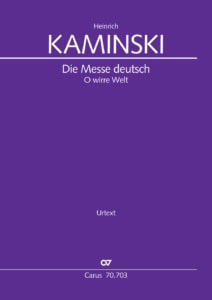
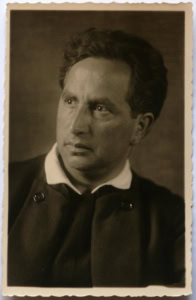
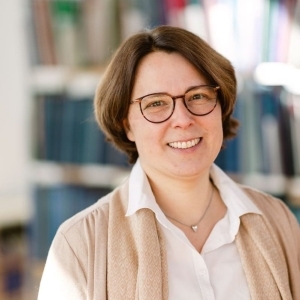
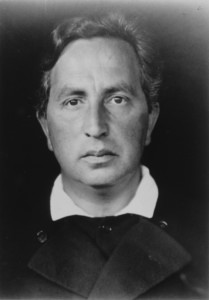
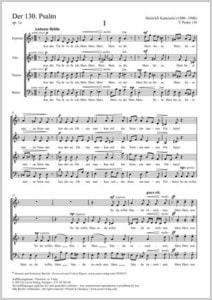 Heinrich Kaminski’s first work, Psalm 130, op. 1a, is one of his most popular compositions. His compositions are not tied to any particular set of religious beliefs, since Kaminski believed the act of composing was itself a “sacred act”.
Heinrich Kaminski’s first work, Psalm 130, op. 1a, is one of his most popular compositions. His compositions are not tied to any particular set of religious beliefs, since Kaminski believed the act of composing was itself a “sacred act”.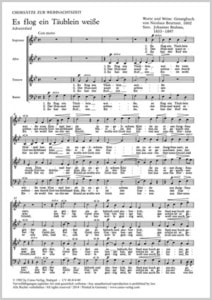 Three impressive choral movements to Christmas carols by Johannes Brahms, Hugo Distler and Kaminski, which enrich the well-known carols with their own unique style.
Three impressive choral movements to Christmas carols by Johannes Brahms, Hugo Distler and Kaminski, which enrich the well-known carols with their own unique style.

Leave a Reply
Want to join the discussion?Feel free to contribute!